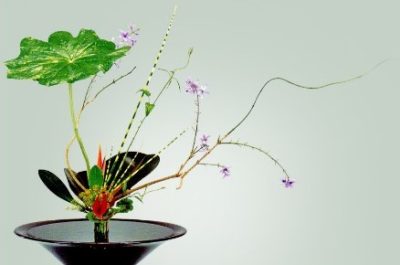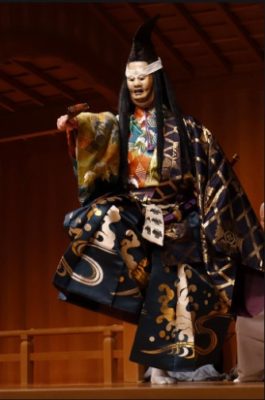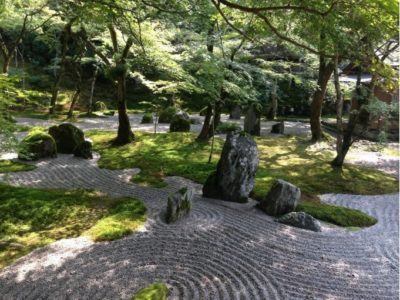Kire: Cutting

The Japanese philosopher Nishitani Keiji, (February 27, 1900 – November 24, 1990), mused something deceptive about plants which, being stationery and sinking roots, give the remarkable appearance of enduring. In the Japanese art of flower arrangement called ikebana, literally “making flowers live”, the Kire aesthetic “cut” separates the flower from its roots in order to let the true nature of the flower be revealed.
The “cut-continuation” aspect of Kire is expressed in the performance of the highly stylized gait of the consummate actors of the Nō drama. Sliding the foot with toes raised, the actor then “cuts” off the normally continuous movement by briskly lowering the toes, simultaneously beginning the sliding movement with the other foot. This adaptation of the natural gait defeats the expectation of continuity to draw attention to the episodic nature of life.

Similarly, in the art of haiku poetry, the “cut-syllable” (kireji), cuts off one image from the following while at the same time linking it to the next. The best known haiku by Bashō, the most famous haiku poet is a masterful and sublime adaptation of the Kire aesthetic:
Furuike ya Kawazu tobikomu Mizu no oto. | Ah, an ancient pond— Suddenly a frog jumps in! The sound of water. |
The Karesansui, or “dry landscape” rock gardens are characterized by a miniature stylized landscape “cut off” from the rest of the world. Often called a zen garden, the Kire aesthetic is sculpted of carefully bordered arrangements of rocks, water, moss, pruned trees and sand which seem petrified, and unnaturally cut off from time… revealing their true impermanent nature in the deception.

In the teachings of the Zen master Hakuin (1686–1769), to make the journey to enlightenment, one must “. . .cut off the root of life”. . . You must be prepared to let go your hold when hanging from a sheer precipice, to die and return again to life”.
Consistent to each of the Japanese aesthetics and to their culture, Kire acts as artistic agent to convey the collective embrace of Zen principles. With special emphasis on the impermanence of all forms, and “less is more”, Kire expresses perspectives stationed as sign posts on the path to self-discovery.
Come Visit Art De Tama Fine Art!
Japanese artist in the United States. Tamao Nakayama was born and raised in Tokyo, Japan, and moved to the U.S. when she was 25 years old. She is still deeply influenced by the Japanese aesthetic, and the belief that ‘less is more’. She is a minimalist abstract artist. She paints and sculpts.
